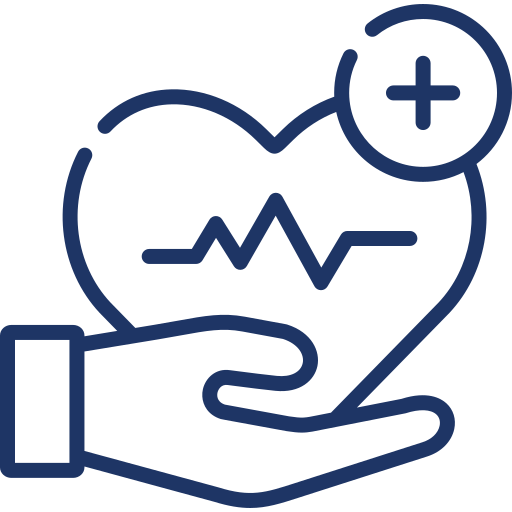People in the United States have been so focused on COVID-19. So much so that they have forgotten about other respiratory viruses that can affect us and our loved ones. But it’s important to understand that there are many illnesses out there that could affect humans anytime.
These viral respiratory infections vary from a common cold to the potentially life-threatening flu. Despite the challenges of the pandemic, it’s necessary for everyone to learn about other respiratory viruses. Why? Because awareness can help keep families and communities safe and healthy.
Rhinoviruses
The term rhinovirus comes from the Greek word “rhinos”, which means “of the nose”. These viruses are often associated with the common cold, causing nasal infections that result in congestion and a runny nose.
It may not sound so bad but rhinoviruses have a fierce side. They are known to aggravate lower respiratory tract diseases like asthma and chronic obstructive pulmonary disease or COPD. Rhinoviruses are pretty diverse as they can spread at any time of the year.
Adenoviruses
These viruses were first found in the adenoids, which is an area of the throat just near the tonsils. There are over 50 adenoviruses found and most of them are responsible for respiratory illnesses. Although these viruses are mild and short-lived, they spread quickly, especially in highly populated areas.
There are no approved treatments yet for adenoviruses, however, there are vaccines that can help prevent outbreaks. Interestingly, there is ongoing research on how some strains of adenoviruses can be used to infect and destroy cancer cells. The experts are hoping to develop them to become potentially effective for anti-cancer therapies.
Pneumoviruses
The term for these respiratory viruses comes from the Greek word “pneumo”, which means lung. There are two types of pneumoviruses:
- Respiratory syncytial virus
RSV is a common virus that affects the respiratory system. It often causes mild, cold-like symptoms that can go away in a week or two. RSV season often occurs towards the end of autumn and the beginning of spring.
Although mild, RSV infections can be a serious condition, especially in older adults and infants. It may also aggravate other health conditions, such as chronic lung disease and asthma.
- Metapneumovirus
Human MPV is a common virus that also affects the respiratory system. It causes upper respiratory infections and is usually prevalent during the winter and early spring seasons.
Parainfluenza viruses
Parainfluenza viruses, also called PIVs or paramyxoviruses, are a sub-group of viruses. They’re closely related to certain pathogens like measles and mumps.
They usually infect the respiratory tract. PIVs are also known to cause a lower respiratory tract disease called croup. This condition is known for the barking cough symptom, similar to that of a seal.
There are two distinct paramyxovirus groups:
- Respiroviruses (PIV1 and 3)
The natural hosts of respiroviruses are humans and rodents. Diseases that are associated with this type of paramyxovirus group include acute febrile respiratory tract infections.
- Rubulaviruses (PIV2 and 4)
The common natural hosts of this virus are humans, apes, dogs, and pigs. The most common disease associated with these viruses is mumps.
PIVs often spread during autumn and spring. Researchers are already working on a vaccine or antiviral to help fight this type of virus.
Influenza viruses
Of all respiratory viruses, influenza viruses are probably the most problematic because they can cause pandemics. They also come in four diverse types—A, B, C, and D. And only influenza D is the type that won’t infect humans.
Influenza viruses circulate among humans because they’re able to avoid immune responses. They mutate continuously, that’s why flu vaccines need to be updated every year for optimum protection.
What are the common symptoms of respiratory infections?
Respiratory viruses can affect parts of the body that help them breathe, such as the nose, throat, sinuses, airways, or lungs. Here are the most common symptoms to watch out for:
- coughing and sneezing
- trouble breathing
- stuffy or runny nose
- sore throat
- muscle pain
- headache
- fever
Who is at higher risk of acquiring respiratory infections?
High-risk individuals include:
- Smokers
- young children
- older adults
- people with disabilities
- people with weakened immune systems
- and more
What respiratory diseases have vaccines?
Infectious respiratory diseases that have vaccines:
- COVID-19
- Influenza
- Pneumonia
- Pertussis (Whooping Cough)
- Tuberculosis (TB)
Infectious respiratory diseases that don’t have a vaccine yet:
- Respiratory Syncytial Virus (RSV)
- Common cold
Talk to your healthcare provider to make sure that you’re up to date on your vaccinations.
Protect yourself from viral respiratory infections
All the respiratory viruses mentioned above can infect humans. Most of them still lack reliable vaccines and treatments so it’s important to raise public awareness.
While researchers and scientists are finding ways to fight these infections, we must do our part too. By practicing preventative measures, we can help prevent these viruses from spreading to uncontrollable levels.
Worried about getting a viral infection? Observe hygiene, wash your hands, and maintain social distancing to prevent RSV, flu, and other respiratory conditions.
Experiencing cold-like symptoms? Go to the nearest urgent care center to get tested for respiratory infections. Prevention is always better than cure.
 (917) 310-3371
(917) 310-3371
















